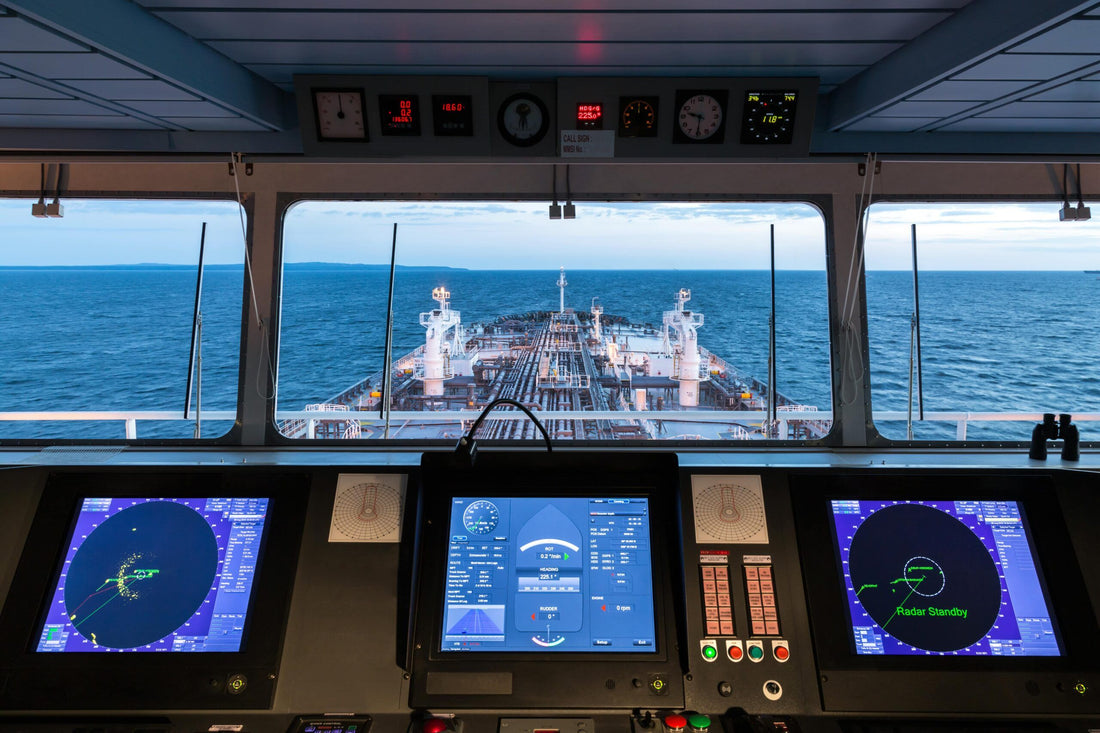
How Are Marine Onboard Communication and Control Systems Evolving in 2030?
Share
According to the report by Next Move Strategy Consulting, the global Marine Onboard Communication and Control Systems Market size is predicted to reach USD 13.24 billion by 2030 with a CAGR of 7% from 2024-2030.
Marine onboard communication and control systems form the backbone of safe, efficient, and increasingly autonomous maritime operations. From international safety regulations to digitalized propulsion grids and emerging cyber threats, shipboard systems continue to advance rapidly. This article explores the key drivers shaping modern systems, drawing exclusively on SOLAS regulations, ABB’s propulsion‑control innovations, and current maritime cyber‑security analyses.
Download Your Free Sample Here
What International Regulations Govern Shipboard Communication and Control Equipment?
According to the report by Marine, the International Convention for the Safety of Life at Sea (SOLAS) sets mandatory standards for radio and distress‑alerting systems on all merchant vessels.
- Scope and Applicability
- Applies to cargo vessels ≥ 500 GT and passenger ships on international voyages, with some chapters extending to smaller vessels (≥ 300 GT).
- Chapter IV: Radio Communications Requirements
- Global Maritime Distress and Safety System (GMDSS): Mandates satellite and terrestrial systems for distress alerts and routine messaging.
- Search and Rescue Radar Transponder (SART) and Emergency Position‑Indicating Radio Beacon (EPIRB): Must be installed with defined performance standards and backup power sources.
- Equipment Installation and Maintenance (Part C)
- Specifies minimum sets of radio gear for Sea Areas A1–A4, on‑board power reserves, and periodic performance and logbook checks.
Summary:
Modern ship communication systems are underpinned by SOLAS Chapter IV, ensuring global coverage and interoperability through GMDSS, SART, and EPIRB installations.
- SOLAS Chapter IV is legally binding on most merchant vessels.
- Equipment lists and power‑reserve requirements leave little room for non‑compliance.
- Regular performance tests secure continuous readiness.
Why Is Electric, Connected Propulsion Central to Control System Innovation?
According to the ABB report, the shift to electric propulsion has unlocked fault‑tolerant, reconfigurable power grids—essential for autonomous operations.
- Fault Tolerance and Reconfiguration
- Traditional mechanical propulsion lacks redundancy; electric grids can isolate and reconfigure around failures, supporting “safe‑mode” operation without onboard engineers.
- Onboard DC Grid™ Technology
- Enables diverse energy sources—diesel generators, batteries, fuel cells—to integrate seamlessly at a common voltage bus.
- Achieves > 20 % fuel‑consumption reduction at part load via dynamic speed adjustment.
- Digital Monitoring and Control
- ABB Ability™ platforms collect sensor data across thousands of nodes, feeding analytics for voyage‑planning, docking control, and remote diagnostics.
- Collaborative Operation Centres allow shore‑based oversight, illustrated by the 2018 Suomenlinna II ferry trials.
Summary:
Electric and connected propulsion systems provide the resilience and data‑rich environment necessary for gradual automation, turning ships into “digital twins” navigable from anywhere.
- Reconfigurable power grids enhance safety without onboard intervention.
- Unified DC platforms reduce fuel use and emissions.
- Remote connectivity supports both manual and automated control.
What Cyber‑Security Threats Challenge Modern Marine Systems?
According to the Indian Defence Review report, as vessels become software‑defined platforms, they face growing cyber‑risks that threaten navigation, propulsion, and port ecosystems.
- Industry Vulnerability
- In 2014, 37 of the top 50 shipping firms were unprotected against basic cyber‐intrusions.
- By 2020, 77 % of companies rated cyber‐attacks as medium/high risk, yet only 64 % had response plans—just 24 % of which were tested quarterly.
- Under 50 % reported protection for Operational Technology (OT) networks.
- Potential Attack Vectors
- Bridge and propulsion control networks, cargo‑handling ICT, secure communications.
- Personal devices (phones, laptops) introduce malware risks when charged or networked onboard.
- IMO Guidelines and Regional Initiatives
- 2021 IMO cyber risk management guidelines outline identification, protection, detection, and recovery strategies.
- India’s Indo‑Pacific Oceans Initiative (IPOI) fosters regional cyber‑security workshops, with initial exercises in early 2024.
Summary:
Cyber‑security preparedness lags behind digital adoption, necessitating rigorous risk management, system hardening, and regular training to protect critical marine infrastructures.
- Many operators remain under‑prepared despite high perceived risk.
- Attack surfaces span from bridge electronics to personal devices.
- International and regional frameworks are emerging to standardize defences.
Next Steps
- Conduct a SOLAS Compliance Audit
- Verify GMDSS, SART, EPIRB installations against Chapter IV checklists; perform functionality tests.
- Modernize to a Fault‑Tolerant Electrical Grid
- Plan phased retrofit of Onboard DC Grid™ components for redundancy and energy‑efficiency gains.
- Implement a Cyber‑Risk Management Framework
- Align with IMO 2021 guidelines; document and test incident response plans at least quarterly.
- Invest in Remote Monitoring Platforms
- Deploy ABB Ability™‑type solutions or equivalent for real‑time diagnostics and shore‑based support.
- Engage in Regular Cyber‑Awareness Training
- Use realistic simulations and tabletop exercises for crew, shore operators, and stakeholders.
By aligning regulations, embracing digitalized electric grids, and proactively managing cyber‑risks, shipowners can ensure their onboard communication and control systems remain at the forefront of maritime safety and innovation.